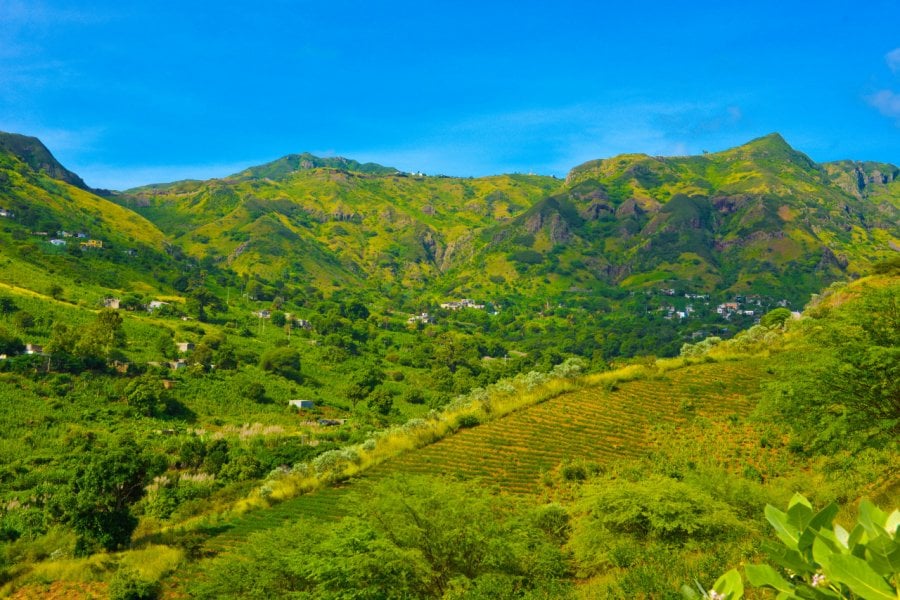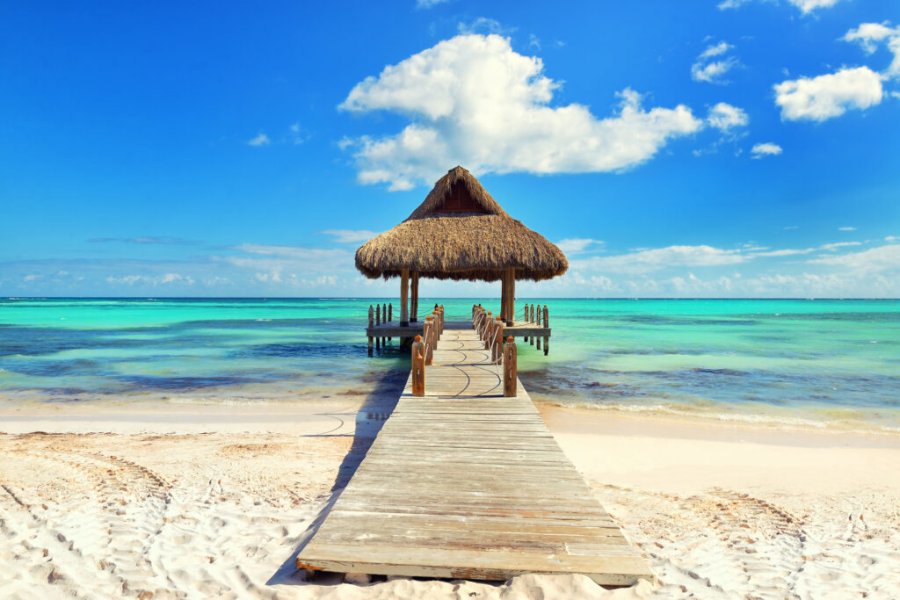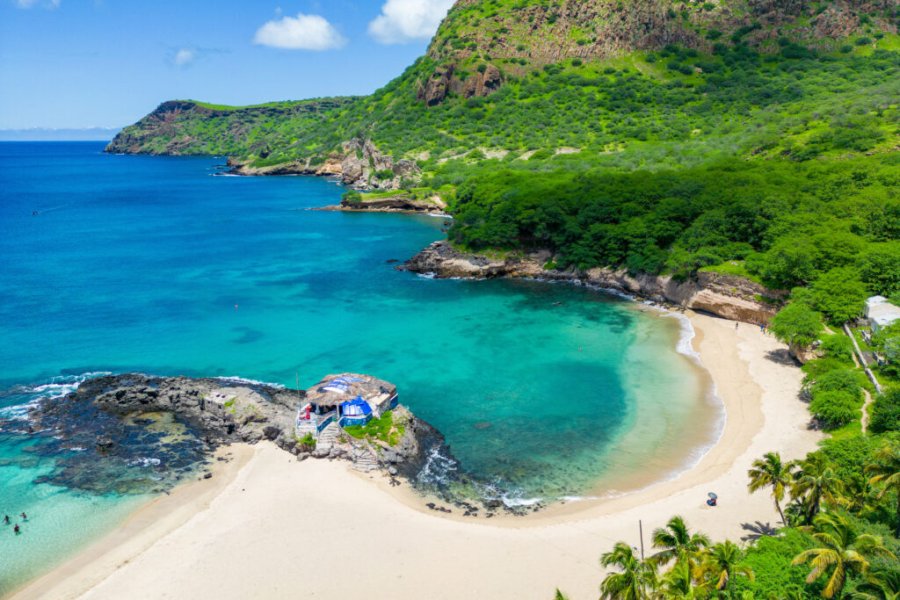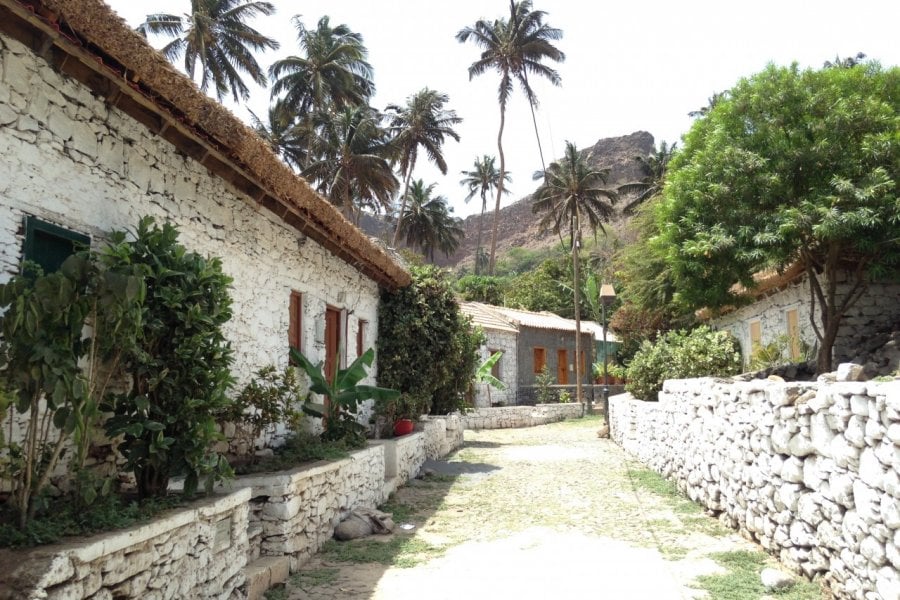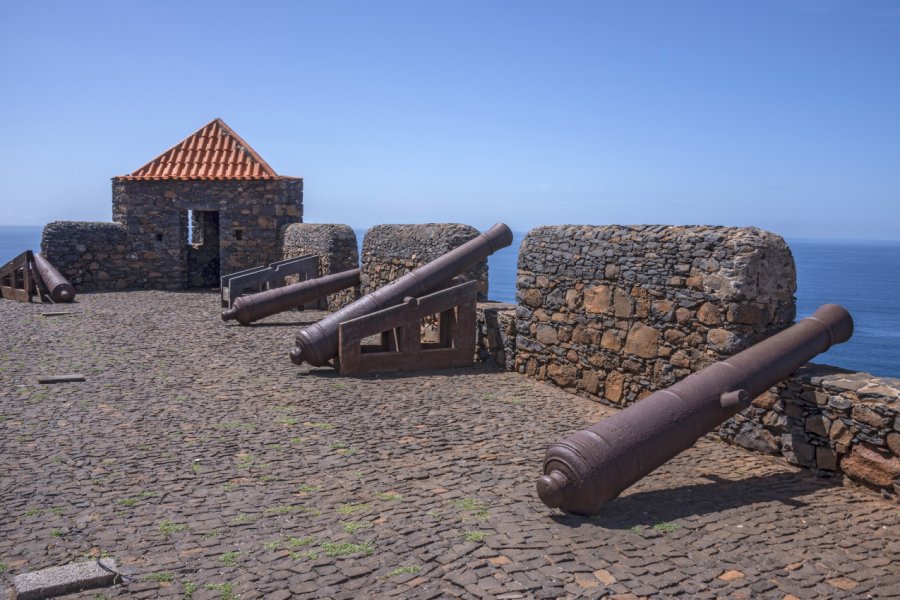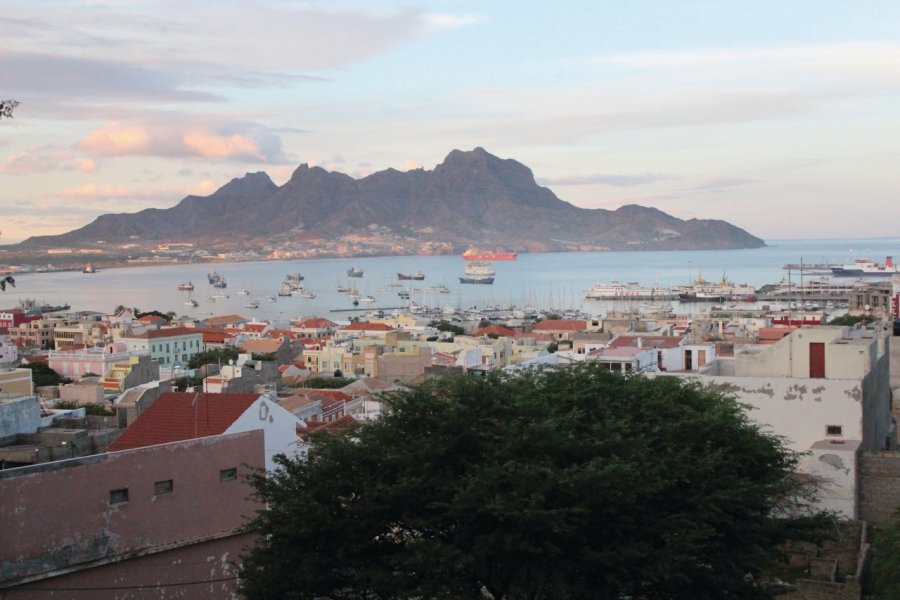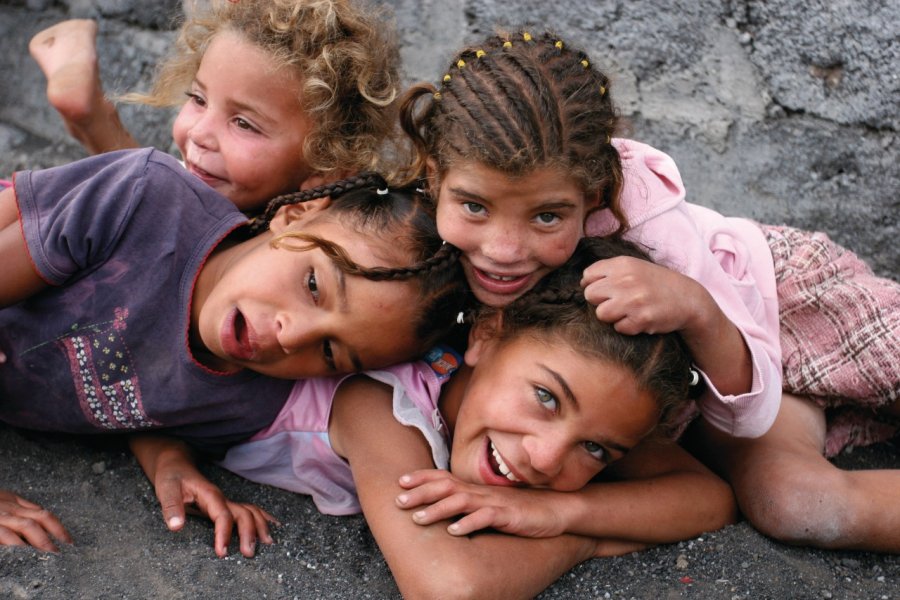Travel guide Cape Verde
Paradise lost in the immensity of the Atlantic Ocean, Cape Verde is still a destination preserved from mass tourism. With its ten wild and mysterious islands, all different from each other, it is a magical country. By following the indications of your Cape Verde tour guide, you will be able to organize an ideal and authentic stay in this small island country of Africa. Hikers will escape to the lush green mountains of Santo Antão or São Nicolau. Water sports enthusiasts can enjoy the beautiful sandy beaches of the islands of Sal or Boa Vista. Those in search of adventure will climb the Fogo volcano and will remember its lunar and paradisiacal landscapes, and the Robinson Crusoe will appreciate a game of big game fishing. Cape Verde is also an endearing country where Creole, African and Brazilian cultures mix with Portuguese traditions, and a population renowned for its kindness.
What to see, what to do Cape Verde?
-
Book an activity
-
Customized travel
- The most beautiful cities Cape Verde
When to go Cape Verde ?
When to go to Cape Verde? The high tourist season in Cape Verde extends from mid-June to mid-September and from mid-November to the beginning of January, when the emigrants, the Cape Verdean diaspora, return to the country. The end of the year is the best season to go to Cape Verde if you like hiking. Note that it is imperative to book accommodations and flights a little in advance to have a place in high season. Otherwise, Cape Verde can be visited all year round, with an average air temperature of about 25°C, and the sea temperature of 24°C.
Suggested addresses Cape Verde
Travel Cape Verde
-
Find a hotel
-
Car Rental
-
International e-SIM package
-
Find a local agency
Destination encore méconnue et à l'écart des sentiers battus, le Cap-Vert offre beaucoup d'alternatives pour profiter de son climat si doux tout au long de l'année. Faites place à la nature, explosant sous toutes ses formes et dans une dimension quasi-primitive. Que l'on opte pour des vacances allongé sur le sable, s'octroyant le luxe de buller, ou pour des vacances sportives axées sur les sports nautiques (kitesurf, planche à voile), ou encore marcher, marcher sans relâche et s'en donner à cœur joie sur les sentiers à l'assaut des montagnes ou du volcan... tout est propice à des expériences enrichissantes. Rien n'empêche par ailleurs, de composer un mélange subtil de ces activités. Un séjour tourné plus particulièrement vers la culture et le patrimoine vous conduira à choisir les îles de Santiago et de Mindelo, qui grâce à leurs lieux chargés d'histoire, nous donnent le sentiment de faire partie d'un héritage universel fascinant.
Find unique Stay Offers with our Partners
How to go Cape Verde
How to go alone
Cape Verde is a fairly safe country for solo travelers. However, avoid walking alone in a big city at night and do not show signs of wealth. Do not venture into the mountains without a guide, as rescue services are much less efficient than in Western countries in case of problems...
How to go on a tour
An all-inclusive ten-day trip to Cape Verde can include a tour of two or three islands at most. For example, a visit to the volcano of Fogo, a must-see in Cape Verde, via Santiago (3 days if you wish to visit the island, one day otherwise), or a stop in Mindelo, the "Brazilian" city of Cape Verde. This tailor-made trip can end with a stop on the island of Sal to enjoy its beautiful white sand beaches and rest from the visits or treks.
How to get around
Domestic flights and ferries connect the islands. For boat trips, two or three companies operate on a more or less regular basis, Fast Ferry, Armas and Interilhas. They connect easily and frequently some islands between them, whether they are Barlavento (northern islands of the archipelago) or Sotavento (southern islands of the archipelago). Fast Ferry provides daily connections between Santiago-Fogo-Brava. However, due to the rough sea, delays are frequent by boat.
Featured articles Cape Verde
Discover Cape Verde
Still a secret destination, Cape Verde has managed to keep itself to itself, the better to let itself be discovered, without the slightest exaggerated complex, where the alchemy between nature and tradition is cultivated. This island country, close to the elements, can be read in the light of its oppressive past, in the plurality of its islands with their unique identities and in the colors of the sands that line its coasts. Here, men have shaped the landscape, paving inaccessible and perilous paths, or planting vineyards and citrus groves on a volcano. They perpetuate ancestral know-how, while moving forward with modernity and international openness. But they are still struggling to tame a rare resource worth its weight in gold: water. Prepare to be enthralled by this sunny escape, and to appreciate the flavors, the slowness and the deliberate loss of time and space..
Pictures and images Cape Verde
The 12 keywords Cape Verde
1. Aluguer

This is local transport, also known as coletivos or Hiace, based on the Toyota model. Aluguers (minibuses, SUVs, pick-ups or 4x4s) go in a given direction and pick up several passengers on the side of the road, so journey times are random. This is the best way to meet the locals and immerse yourself in local life.
2. Barlavento Sotavento
These two terms determine the orientation of the islands according to their position in relation to the prevailing north-easterly wind. The northernmost islands, Sal, Boa Vista, São Nicolau, Santa Luzia, São Vicente and Santo Antão, are known as the Barlavento (windward) islands. The southernmost, the Sotavento (leeward) islands, include Maio, Santiago, Fogo and Brava.
3. Cachupa

In the spotlight: cachupa, the national dish that's omnipresent in every home and on every menu. A comforting stew prepared in a variety of ways, it includes hominy corn, beans, root vegetables, pork fat (simple version) or meat (enriched version). For breakfast, refogada is served with sausage and egg.
4. Carnival
Inspired by the Brazilian carnival, it is now spreading to all the islands. Mindelo's carnival continues to attract curious visitors from all over the world. For the parade, each group chooses a theme and develops a choreography, in the greatest secrecy. On Mardi Gras day, the show gives way to celebration, floats and parades.
5. Creole
To communicate with each other, slaves were forced to gather words from Portuguese and other sources, and these mixtures are at the origin of the Cape Verdean mother tongue. It's basically 15th-century Portuguese with simplified grammar; phonetics and vocables have been added from Manding languages.
6. Water
Water is an essential factor in development, which is why the State devotes part of its budget to it. Some houses have no access to running water, as in the dry areas of São Nicolau, or in Sal, Boa Vista and Maio, where seawater desalination is used to supplement water delivered by tanker.
7. Grogue
Sugar cane brandy and the country's main spirit, grogue is to Cape Verde what rum is to the West Indies! Regulated by law since 2015, production takes place between January and May. On the islands of Santo Antão and São Nicolau, you can visit the trapiches (traditional factories where sugarcane is crushed) and discover its flavours.
8. Music
Music is an integral part of Cape Verdean life, drawing its strength and character from collective, often painful, experience. One of the highlights of a trip is listening to the morna, shaped by guitars and violins, in a café in the evening, or the livelier accents of the funaná, enhanced by the scrapings of a unique percussive instrument.
9. Saltworks

The archipelago and salt is a love story: as proof, the name given to the island of Sal. Indeed, in the 19th century, the island was the economic pillar of the country thanks to the extraction of this strategic product. Pedra Lume perfectly illustrates the epic of this white gold rush. The other flat islands also had their heyday.
10. Sobrados
These timeless-looking two-storey houses were built in colonial times. They were used to demarcate social classes, but also to indicate the personal wealth of their owners. Today, they represent a significant architectural heritage, and some of the most beautiful and colorful examples can be seen in São Filipe and Mindelo.
11. Turtles
Cape Verde is an important stopover for turtles along their migratory corridor between America and Africa. The archipelago is a refuge for them and although the local population continues to collect eggs and glorify the taste of turtle soup, they are now aware of the growing pressure for their preservation.
12. Trekking

A superb hiking destination, the views from the mountains, the solitary slopes of Brava and the astonishing crater of the Fogo volcano, make this region a unique experience. Much of the walking is done on the curious cobbled paths made in the most unlikely corners, making the exercise easier than you might think.
You are from here, if...
You don't hesitate for a second to eat a steaming cachupa refogada for breakfast, made with corn and refried beans, forgetting about coffee and croissants and all your other usual habits...
You play a musical instrument with ease, learned from an early age with a family member, be it guitar, violin, gaita or conga.
You plan to spend almost every weekend with family or friends at a beach restaurant, not only eating and drinking, but also dancing, listening to live music, singing along and partying...
The ponche recipe holds no secrets for you, and you've reached the point of making it "homemade" with the fruity blends of your choice.
Being invited to join the dance floor and move to a coladera, batuka, mazurka or other dance with tight cheek-to-cheek undulating movements doesn't impress you in the least.

